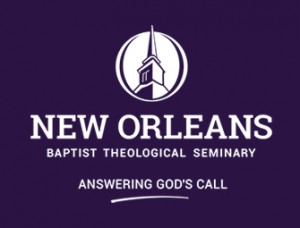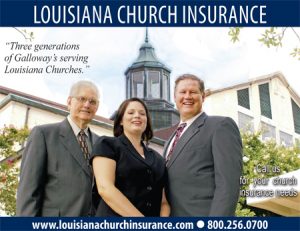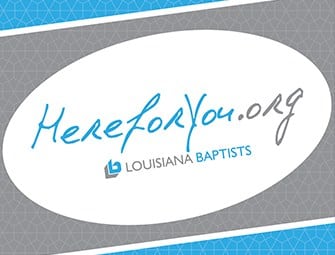By Brian Blackwell, Message Staff Writer
SOUTHWEST LOUISIANA – She’s known as the Forgotten Storm.
But for those residents of southwest Louisiana who survived Hurricane Rita, the storm will always be a memory that will live on for years to come.
The hurricane made landfall at around 7:40 am between Johnson Bayou and Sabine Pass on Sept. 24, less than a month after Hurricane Katrina wreaked havoc on the southeastern part of Louisiana.
The storm reached land, it weakened, but not before dumping heavy rainfall on a widespread area of the state. More than 1 million people were without power at one time during the storm, which traveled up the central part of the state before leaving behind homes, communities, businesses and lives in need of repair.
Still, Louisiana Baptists are thankful for the light God provided through the storm and aftermath by the ministry of disaster relief teams and others who came to their aid.
“When we look at the hurricane, what we saw was lots of physical damage to properties and in the middle of that churches responded like we do with disasters,” said Bruce Baker, director of missions for the Carey Baptist Association of churches in Southwest Louisiana. “We had churches from throughout the state and country to help. And we had churches help each other. We saw the best of Christian community through that.”
Everyone touched in some way
Two days after Rita made landfall, Steve James returned to assess damage to Trinity Baptist Church in Lake Charles where he serves as pastor. Debris, water and pieces of stained glass windows filled the auditorium, which was the only part of the church that received major damage.
James wanted his congregation and the community to know that Trinity Baptist Church planned to stand up to the trying circumstances. On the Saturday following Rita, James took a piece of plywood and wrote “Services tomorrow at 10:30 come as you are” and placed it at the corner of the church’s property.
Around 125 people showed up that Sunday and met in one of the undamaged areas of the church for a time of praise and worship. The following Sunday they began to have their regular services in the largest meeting area of the church.
For several weeks they conducted three worship services, but had no Sunday school hour or evening services. This gave members the opportunity to work on their homes or the homes of their friends. Shortly after that, the church went back to their regular worship schedule, meeting in their double gym.
“For the church, Rita was a time of inconvenience not a time of catastrophe,” James said. “It allowed us the freedom to minister to the needs of other churches by financially assisting pastors and providing materials for church repairs.”
James was amazed at the resilience of his congregation.
During the time of transition the membership was faithful in their church attendance, their giving and their hospitality. The church opened its facilities to house many groups from outside of the area, who came to help with the cleanup of Lake Charles.
“Trinity has always had a heart for reaching out to the community,” James said. “It was fun to see them live out what God had place on their hearts, which was to help their neighbors.
“Everybody was touched in some way by Rita. Some were touched more than others,” James said. “Some people only lost a shingle, others their whole house. But, through it all, God was good in providing the materials and man power for us, as a church, to reach out to our own church family and the community. Every day we had teams cleaning up yards, putting down blue tarps, repairing roofs, cutting away downed trees, stacking and hauling away debris and rubbish and feeding people. It was a time of bringing our church together for a common cause in ministry.”
Ministry born after Rita
The civic center in the predominantly Catholic town of Gueydan had just shut down and evacuees from Katrina transferred to another site in Pineville because of the anticipation of Rita coming through the town. Once the storm passed, the evacuees were transported back to the civic center where they remained for weeks without electricity and little help from outside groups.
While evacuees of Katrina and Rita were living there, First Baptist Church join, churches of other denominations to provide clothing.
And in the months that followed, a vast operation developed. Donations poured into the town and they had such an abundance of leftover items that First Baptist Church decided to open a clothing ministry in October 2006, long after evacuees left.
The church expanded this ministry in 2013, when a second building was added to accommodate the growing need.
Now, First Baptist Church’s clothing ministry sells an average of 3,500 items a month, though that number has reached as many 5,000 items some months.
Funds from the clothing ministry are used to help provide money to pay for utilities for needy families.
Margaret Freeland, who was a volunteer at the civic center in 2005 and a member at First Baptist Church, said the storm helped unify the town and help the church see a need for a ministry that didn’t exist prior to Rita.
“We didn’t see the need for this ministry before Katrina and Rita, but the Lord laid it on the mind of people in this church,” Freeland said. “I’m thankful the Lord used this to wake up our eyes to help others in the community. The two storms in a way were a blessing.”
Ministry to evacuees
Scenes of evacuees entering Louisiana Baptist churches were a common sight in the weeks following Rita.
First Baptist Church of DeRidder opened its activities building for some Rita evacuees, and the congregation ministered to them in many ways, including just listening to their stories.
They also ministered to a National Guard unit from Dothan, Ala., providing water and air-conditioned activities during their three-week stay there. The guardsmen gave back to the church, helping the congregation remove sheetrock, carpet and pews inside the chapel damaged by the storm.
“It was awesome to see how our congregation came together,” said publications secretary Kim Hughes. “Here we had people without power and they were coming to the church to cook food and take care of those who came to us needing help. Everyone was willing to pitch in and wanted to reach out and help.
“It didn’t take a lot of rallying,” she stressed. “And that’s how our church seems to be. If there’s a need, they just reach out and minister. We are blessed, but we are blessed to be a blessing.”
Further north, members of Old Anacoco Baptist Church in Leesville showed the love of Christ to a gym full of evacuees, even though the church was without power at the time.
Some of the evacuees staying at the church gym even pitched in to help out. A number of them brought their own cooking pots and prepared meals, as well as helped clean the gym. They also helped dig ditches to lay water lines to install laundry facilities and repaired a well pump.
The evacuees were a blessing to all who came in contact with them while they stayed at the church, said church member Brent Cosio.
“We’ve had some of those people come back and visit us since then,” recalled church member Brent Cosio. “We sat around, went to Bible study and prayed about reaching out to others many times in our church before Rita.
“Now, it was time to do it. Our church was focused on something more than just their own personal needs,” he continued. “We were willing to do what Christ commanded.”
Philip Robertson, who was Louisiana Baptist Convention president during Rita, said churches like Old Anacoco Baptist and First Baptist DeRidder were like many churches in the state – doing everything they could to minister to those impacted.
“There is nothing that will unite people like a crisis,” said Robertson, pastor of Philadelphia Baptist Church in Deville which hosted primarily Katrina evacuees. “So when our state dealt with both of those massive storms, you were looking at a double whammy hitting the same state within weeks. People unite and we want to take care of one another, so you definitely saw that in Rita and Katrina.
“Louisiana Baptists came together, loved one another and helped one another,” he continued. “It was a time of laying aside those differences and doing what God calls us as the body of Christ he commands us to do. In some ways that coming together has continued on. You look at the last 10 years in the Louisiana Baptist Convention and I think we have been moving forward. Those two storms perhaps facilitated it.”
Grateful churches
Among the campuses that sustained significant damage was East Ridge Baptist Church in Lake Charles. The congregation lost its sanctuary during Rita.
Before the hurricane, East Ridge had purchased land just a few miles away to relocate [that was delayed until October 2010]. Pastor Alan Weishampel said Rita put those plans on hold briefly while the church recovered.
Church members were joined by groups from Oregon, Tennessee and Texas during the rebuilding process.
The storm allowed East Ridge to minister to a FEMA mobile home village after the storm. His members shared the gospel with and ministered to the residents there. Leading some to accept Christ as their personal Lord and Savior until the park shut down a few years later.
“They were close enough that it was our mission field,” Weishampel said. “We did what we could to share the gospel until they closed the mobile home village.”
Since relocating, the morning worship services are consistently full and the church is studying plans to expand the facility.
For Grand Caillou Baptist Church in Houma, serving more than 800 people each day became the norm for about a month after Rita.
Already recovering from Katrina, the town was again hit with flooding, although it was more than 200 miles from where the storm made landfall. Floodwaters came within three inches of coming into the church’s new worship facility.
The church served as a distribution point for much needed fresh drinking water, emergency food supplies, cleaning materials, Red Cross meal distribution and spiritual support.
The initial emergency response ministry lasted about a month, before making way for long-term recovery ministry.
For the next year, Grand Caillou Baptist Church housed and coordinated efforts for more 300 volunteers who came to assist in the recovery efforts.
Many assisted in mud-out, mitigation, cutting down trees, clearing debris from homes and property and contributed to construction projects.
Other groups assisted in providing hot meals who were rebuilding homes conducting needs assessment surveys, sharing Bibles and giving away tracts.
Volunteers also went house to house praying for and encouraging people who were engulfed in a sense of overwhelming despair.
“As a result, our church became known in the community as one of the only places people could turn to when the local government agencies failed them, FEMA failed them, and things seemed hopeless,” said Marcell McGee, pastor of the church at the time and now pastor of Mt. Union Baptist Church in Spearsville. “Southern Baptists, particularly from our own state, provided a quick and immediate response.”
Not far from the storm’s direct hit, First Baptist Church in Hackberry was forced to replace its roof and carpet because of damage from Rita.
For the next three months a team from a California church moved into Hackberry worship center and lived inside until repairs were complete. The congregation also donated Christmas gifts to every family in the town.
Margaret Shove remembers how excited she was to receive a new Bible and gift cards. She said those who helped in the rebuilding process embodied the true spirit of Christ’s love.
As for the recovery of First Baptist Church, Shove said they average around 100 on Sunday mornings, which is more than before Rita. The congregation is planning to expand its parking and purchase portable buildings for classrooms.
“When Rita was happening, everyone was like brothers and sisters helping each other,” Shove said. “We are better off now than before.”



